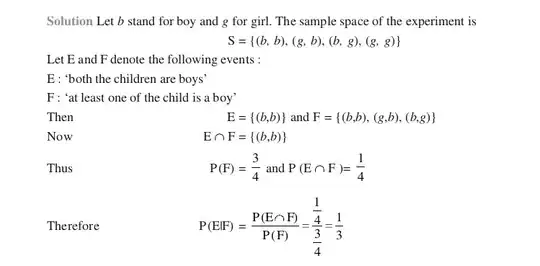Ever hear the puzzle "I have two coins; they add up to 30 cents and one of them is not a quarter; what two coins are they". The answer? One is a a nickle and the other is a quarter. Wait? You said one of them was not a quarter! It isn't; it's a nickel and the other one is a quarter.
Believe it or not that is legitimate and useful.
You know one of them is a boy but you don't know which one. There are four equally likely possibilities. One is a boy and the other is a boy. One is a boy and the other is a girl. One is a girl and the other is a boy. One is a girl and the other is a girl.
The last one is ruled up. So we are left with 3 equally likely situations. One is a boy and the other is a boy. One is a boy and the other is a girl. One is a girl and the other is a boy.
One situation is 2 boys. Two situations are 1 girl and 1 boy.
So the probability of 2 boys is 1/3. The probability of 1 boy and 1 girl is 2/3.
The other way to view it is to arbitrarily think about which one is older. This is equivalent to thinking of two dice as being different colors to show that the dice rolls are independent. This is the exact same thing. The childrens' genders are independent.
Suppose you roll two dice. One green and the other is red. You are told one of them rolled even but you aren't told which one. What is the probability both rolled even?
So the guy says "I have two children. The oldest in name Qinkleberrysmith and has green skin. The youngest is name Schmithbuttflangy and has red skin. Oh, one of them is a boy."
So what is the probability that they are both boys? Well, Qinkleberrysmith could be a girl while Schmithbuttflangy is the boy. Or Schmithbuttflangy could be a girl and the Qinkleberrysmith could be the boy. Or they could both be boys.
Now does it actually matter if we know that one is older than the other or what their names are or what the color of their skin is? No, it does not.
